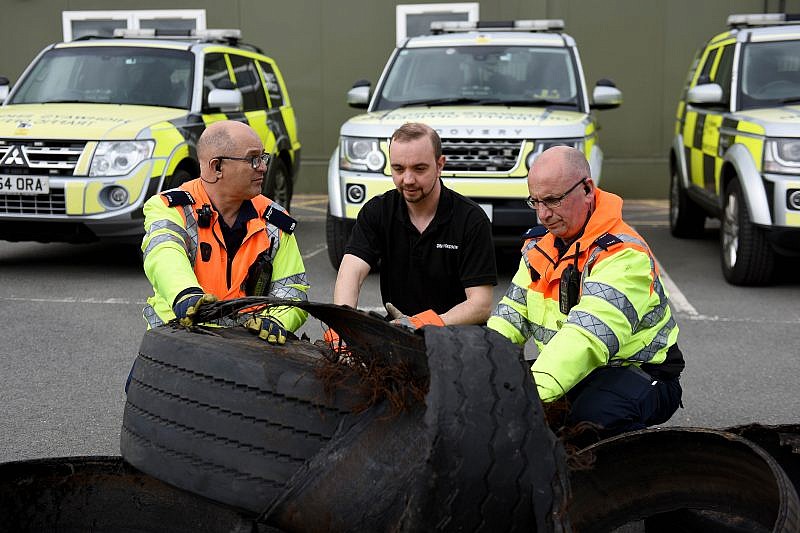
Almost three quarters of motorway incidents related to tyre failure could be prevented if drivers carry out simple checks, according to startling new research unveiled today (Tuesday 24 April 2018) by Highways England and tyre company Bridgestone.
More than 30 people were killed or seriously injured in motorway accidents in 2016 due to illegal or faulty tyres. But an 18-month study says commuters, commercial drivers and other road users can do a lot more to help reduce accidents through regular checking.
Richard Leonard, Highways England’s head of road safety, said: “England’s motorways are the safest in the world but we’re determined to reduce the number of people killed and seriously injured on them.
“This important research confirms our view that road users must play a bigger role and get into the habit of checking tyre pressures and tread depths and looking out for nails and other debris stuck in tyres before setting out on journeys. These simple checks could save lives.”
Unveiled today at the annual Commercial Vehicle Show at Birmingham’s NEC, the research reveals that almost three quarters of tyre failure samples analysed by Bridgestone involved poor inflation or debris penetration issues – problems which could be potentially avoided with better tyre husbandry.
Both Bridgestone and Highways England, the government company for operating, maintaining and improving the country’s motorways and major A roads, are partners in the multi-agency road safety charity Tyresafe. They worked together to carry out the research over 18 months between the beginning of 2016 and last summer.
During the project, staff working for Highways England at depots across the West Midlands provided more than 1,000 pieces of tyre debris from motorways to a technical engineering team from Bridgestone to analyse.
The findings from 1035 tyre segments retrieved from the M1, M6, M40, M5 and M42 revealed:
- 56% of tyres failed due to road/yard debris penetration
- 18% failed due to poor inflation
- 8% failed due to poor vehicle maintenance
- 1% of tyres failed due to manufacturing defects
- 1% of tyres failed due to excessive heat
- 16% of the tyres couldn’t be specified to one particular problem
The tyre debris was taken from cars, vans, commercial vehicles and motorbikes, with under-inflation of tyres a key theme, along with poor vehicle maintenance, both of which accounted for 26% of the entire sample. When considering that 32 people were killed or seriously injured in motorway road traffic accidents in 2016 due to ‘illegal, defective or under-inflated tyres’[1] Bridgestone and Highways England say simple tyre checks save lives.
In addition, the cost to the economy from a 2-hour delay on a busy stretch of motorway following a 2-lane closure stands at £135,360 and a massive £1,488,960 for a 3-lane closure lasting up to four hours[2].
Some of the samples were particularly alarming, with a temporary ‘space-saver’ spare tyre being run to destruction, while a number of potentially lethal and illegal ‘string’ repairs were also found on car tyres, which are completely unsuitable at any speed, let alone 70mph speeds on motorways.
Bridgestone technical manager Gary Powell, who oversaw the analysis of the debris with field engineer Peter Moulding and the rest of the firm’s technical department, said: “This report has taken a great deal of time and effort, involving a painstaking process of collecting tyre debris over 18 months and analysing it in depth thereafter. In conclusion, some simple tyre checks can save lives, not to mention reduce the risk of a stressful breakdown on a motorway.
“With proper vehicle inspection and maintenance programs, many of the failure methods noted should be detectable and preventable. In light of these results, we would also advise that tyre pressure monitoring systems (TPMS) are fitted to vehicles which don’t benefit from this technology already. It will assist with the detection of penetrations and deflations.”
[1] Figures taken from Highways England’s Casualty Report Appendix 2016
[2] Figures taken from Highways England’s Casualty Report Appendix 2016




